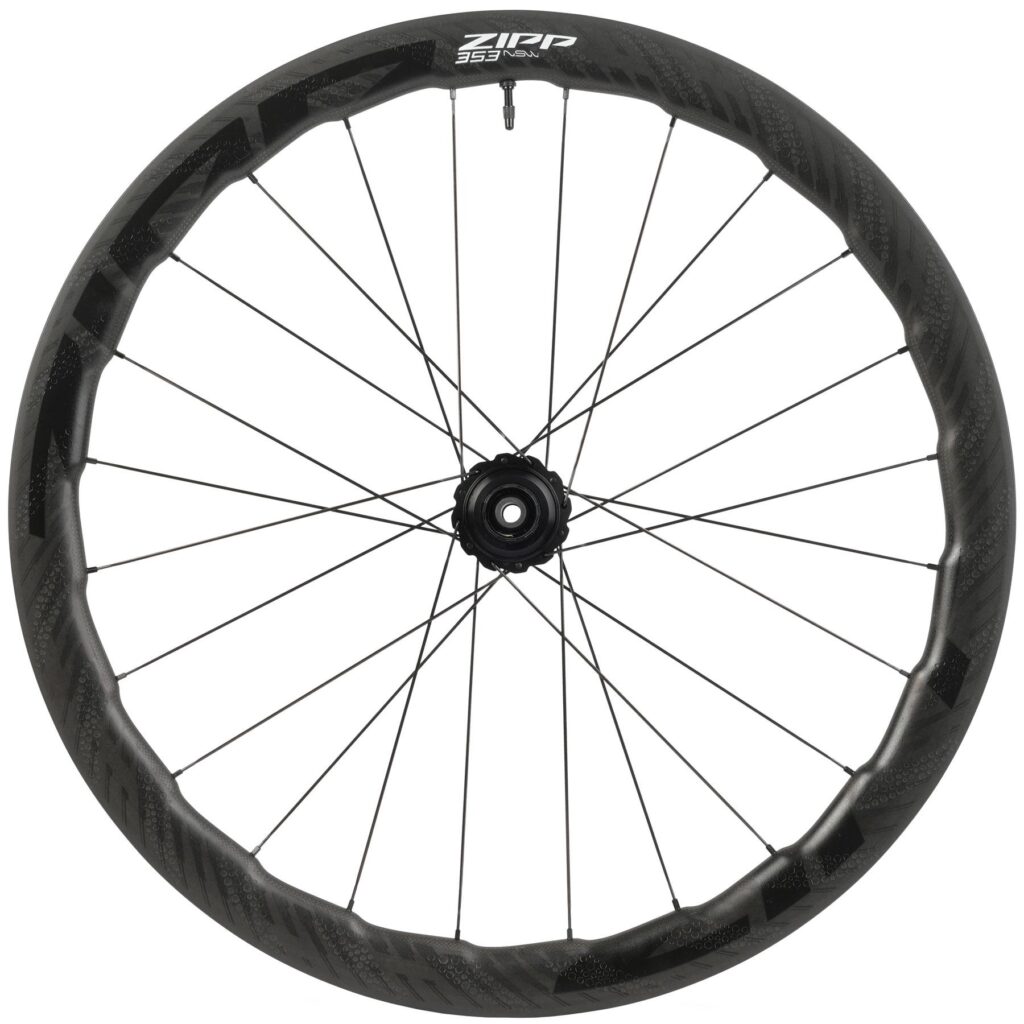Title: Zipp 353 NSW Wheelset Review: Do We Really Need Live Tyre Pressure Monitoring?
In the ever-evolving world of cycling technology, innovations designed to enhance performance and rider safety are constantly making headlines. One such advancement comes from Zipp, a brand revered for its cutting-edge wheelsets. The recent release of the Zipp 353 NSW wheelset has sparked considerable debate among enthusiasts and professionals alike, particularly regarding its built-in live tyre pressure monitoring system. As cyclists increasingly seek ways to improve their aerodynamic efficiency and overall riding experience, the question arises: is real-time tyre pressure monitoring a game-changer or just another gimmick? In this article, we delve into the features of the Zipp 353 NSW, assess the practicality of live tyre pressure monitoring, and explore what this technology could mean for the cycling community.
Zipp 353 NSW Wheelset: Exploring the Impact of Live Tyre Pressure Monitoring on Performance
The introduction of live tyre pressure monitoring in the Zipp 353 NSW Wheelset offers cyclists an innovative edge, transforming the way they approach performance and safety on the road. Accurate and real-time data on tyre pressure allows riders to adjust their inflation levels instantly, ensuring optimal contact with the road and improved handling. This technology not only enhances comfort but also affects how the bike performs under various conditions. For competitive cyclists, the difference in speed and stability can be crucial, as too low or high pressure can lead to inefficient riding, affecting overall race performance.
Furthermore, the convenience of monitoring tyre pressure on-the-go means less downtime for manual checks and adjustments. With features like automatic alerts and smartphone integration, cyclists can stay informed about their tyre status without interrupting their ride. The advantages provided by live monitoring can be summarized as follows:
- Enhanced performance: Optimal pressure translates to improved aerodynamics.
- Increased safety: Reduced risk of blowouts or punctures.
- Time-saving: Eliminates frequent manual pressure checks.
- Data-driven decisions: Informs changes based on conditions, such as road surface and temperature.
In terms of practicality, the features of live tyre pressure monitoring can significantly influence overall riding experience. Comparing traditional setups to the advanced systems integrated within the Zipp 353 NSW, the differences in performance metrics become evident. Below is a brief overview of key attributes:
| Feature | Traditional Setup | Zipp 353 NSW with Monitoring |
|---|---|---|
| Pressure Monitoring | Manual checks | Real-time alerts |
| Adjustment Efficiency | Time-consuming | Instant and easy |
| Safety | Higher risk of issues | Proactive management |
| Performance Consistency | Variable | Optimized |
Assessing the Benefits and Drawbacks of Real-Time Tyre Pressure Data for Cyclists
The integration of real-time tyre pressure monitoring into cycling offers several notable advantages that can significantly enhance a rider’s experience. Firstly, maintaining optimal tyre pressure is crucial for performance, as under-inflated tyres can lead to increased rolling resistance and a risk of pinch flats. With live data, cyclists can make adjustments in real-time, ensuring consistent performance regardless of terrain. Additionally, real-time monitoring promotes safety; by receiving alerts for low pressure, riders can avoid potential blowouts that might occur during high-speed descents or rugged trails. The convenience of having this data at a glance can also encourage cyclists to take better care of their equipment, leading to longer tyre life and improved overall performance.
However, there are important drawbacks to consider when weighing the practicality of live tyre pressure data. Cost is a significant factor, as the technology often entails a higher upfront investment, which may not be justified for casual cyclists. Moreover, complexity can arise; the reliance on electronic systems increases the chances of technical failures, which can leave riders stranded or misinformed. Lastly, some cyclists prefer the traditional method of checking tyre pressure manually, finding that the tactile experience allows them to be more in tune with their bike’s handling. In essence, while real-time data can enhance cycling performance, it also introduces challenges that may not appeal to every rider.
Expert Recommendations on Integrating Live Monitoring into Your Cycling Routine
Integrating live monitoring into your cycling routine can significantly enhance your riding experience, especially if you invest in advanced wheelsets like the Zipp 353 NSW. Experts recommend prioritizing real-time tyre pressure checks to prevent unexpected flat tires and maintain optimal performance. By utilizing a live monitoring system, cyclists can effortlessly track pressure fluctuations, enabling them to adjust forces based on terrain and riding conditions. This proactive approach can result in improved traction, better control during descents, and a decrease in rolling resistance, all leading to enhanced speed and efficiency on every ride.
Incorporating technology shouldn’t overshadow traditional maintenance; rather, it complements it. Cyclists are encouraged to establish a consistent pre-ride checklist that combines both traditional and technological assessments. Here’s a simple table summarizing daily monitoring tips:
| Action | Frequency |
|---|---|
| Check tyre pressure via live monitor | Daily |
| Inspect for visible damage or wear | Weekly |
| Clean and lubricate valve stems | Monthly |
Adopting live monitoring not only facilitates instantaneous feedback but encourages a more engaged riding experience, making each journey more enjoyable while extending the longevity of your equipment.
Wrapping Up
In conclusion, the Zipp 353 NSW wheelset represents a significant advancement in cycling technology, particularly with its integration of live tyre pressure monitoring. As cyclists continue to seek optimizations for performance and safety, the question of whether such innovative features are essential remains a topic of debate. While live monitoring can provide real-time insights, enhancing the cycling experience, some argue that traditional methods still suffice. Ultimately, as with any evolving technology, the true measure of its necessity lies in individual preference and riding style. As the cycling community weighs the benefits versus the need for such advancements, the conversation surrounding innovation in wheelsets-and cycling gear at large-will undoubtedly continue to evolve. As we ride into the future, one thing is clear: the pursuit of excellence in cycling technology is far from over.











